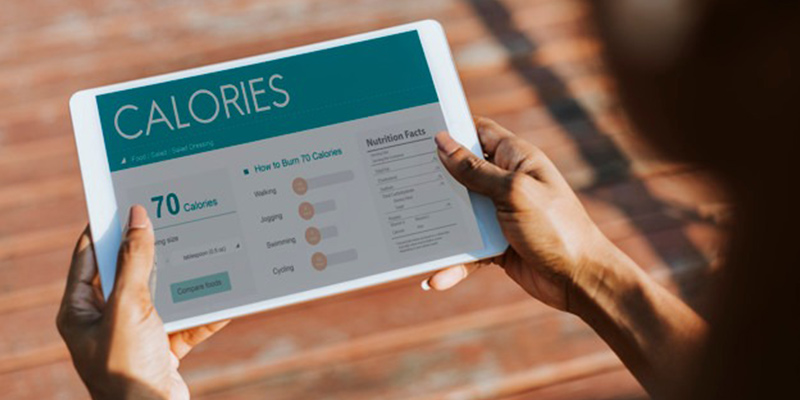How to make fitness affordable using digital apps

With India’s countrywide shutdown, COVID-19 has taken away a lot of the things we love. No more dining out, meeting friends, going to the movies, and most importantly, outdoor exercise. All gyms, fitness centers, and parks are shut, as people are relegated to their couches. However, it appears that fitness isn’t taking a back seat. People, more than ever, are looking towards indoor exercise as a way to remain healthy (and sane) during the nationwide quarantine.
As per industry statistics, India’s retail fitness services market supports about 60 lakh active customers as of 2018. From this population, the average Indian dishes out anywhere between Rs. 26,000 to Rs. 30,000 annually towards outdoor fitness services. While participants studied were mainly gym-goers, this industry amount is also inclusive of fitness club memberships, personal training services, health classes, nutrition guidance services, and more.
On the other hand, exercising indoors consists of doing online home workouts, that can be through a website like YouTube or an app. A study assessing the fitness habits of people from seven major Indian cities found that of the 3000 sampled, about 80% swore by fitness apps to track schedules, and 50% did not have any memberships at fitness centers. Here’s a breakdown of how fitness apps work and what types of fitness apps are available in India.
How Fitness Apps Work
Fitness apps essentially use a variety of hardware, pre-assembled in your smartphone, to measure your motion. Your app can tell you the number of stairs you’ve climbed, your speed, heart rate, distance covered, and the calories you have burned in the process. The more sensors your phone has, the more accurate your fitness app will be at measuring your progress. These sensors are gyroscopes, accelerometers, barometric altimeters, and compasses.
Gyroscopes assess your rotation and orientation. Orientation matters because you burn energy differently if you are jumping rope versus doing crunches. Accelerometers assess how you move: including explosivity, speed, and pattern of movement, and help with telling the difference between running, jumping, or stretching. Next, your phone’s compass measures your cardinal direction, and with its magnetometer, it can guide your way. Finally, a barometric altimeter measures atmospheric pressure. It can tell when your device is at a particular height from the ground.
The aforementioned sensors cover all essential functions of a fitness app (distance covered, speed, recognition of movement), except for one crucial feature: measuring your heart rate. Your heart rate directly affects the amount of energy you’ve expended. To measure heart rate, an optical LED sensor is necessary. The phone should be pressed to your skin such that the LED can emit light into your skin. As your heart’s rhythm changes, the color and intensity of the light shifts. This change in light is recorded by fitness apps to give an indication of your heart rate.
Types of Fitness Apps in India
- Personal Training Apps: Such apps serve as a virtual replacement to real life personal trainers, and are ideal for people who do not want to spend money on expensive gym memberships. You can have in-ear instructions, read articles, or you can watch tutorials of equipment-free workouts on the app itself. Adjusting the level of difficulty to your experience, fitness goals, weight, and age are also available. Some personal training apps double as fitness trackers and calorie counters as well. eg: BodBot*, Fitvate*.
- Fitness Trackers: These apps measure how much energy you have expended while working out. They also measure health indicators like distance travelled, heart rate, and steps taken using smartphone sensors. As they log your progress, these apps use push notifications to motivate you to stick to a workout plan or diet. eg: Google Fit*, Nike Run Club*.
- Calorie Counters: These apps log the food you have eaten in a day by portion size and weight to assess the calories you are consuming. You need to put in your activity level, height, weight, and age for a simple body-mass index calculation. The app will then estimate the number of calories you should be eating to gain, lose or maintain your weight. Some advanced versions scan the barcodes on the backs of packaged foods to automatically log the number of calories you are about to eat. eg: HealthifyMe*, MyFitnessPal*.
- Workout Plan Apps: Unlike a personal training app, these apps do not offer person-to-person advice. Instead, they are suited to those looking for a regimented exercise plan across a longer duration. You can find a slew of fitness plans, both free and paid, for a variety of goals. The app will also explain the best way to carry out a particular movement. Some workout apps curate playlists with consistent beats for steady performance. You can also log how far you have come in your plan by updating your app once you have finished a workout. eg: BodyBuilding.com App*, Body Space*.

In conclusion, while the COVID-19 situation may have closed your doors to the outside world, it should open your doors to new the world of fitness available at your fingertips. All the aforementioned fitness apps are free to install. Moreover, some are also completely free to use. Exercising has never been more affordable.
*RBL Bank is not seeking to actively promote any of the products mentioned in this article. They are mentioned as examples of products of a specific kind.

 Blog
Blog Blog
Blog



Comments
No comments yet.